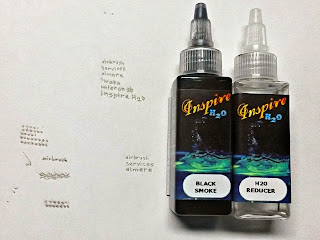This portrait is sprayed on canvas. It is a surface for airbrushing very different from paper or board since the canvas' surface is littered with tiny cavities that require special attention to be filled with paint. The surface was grounded with Schmincke Aero Grund, a white primer to ensure good adhesion of the paint. Many layers of this primer were sprayed prior to airbrushing the portrait. Portraits on canvas take much more time than airbrushing on paper, but they have an atmosphere that is difficult if not impossible to copy on smooth surfaces.
The paint used is Inspire H2O, mixed with Createx 4012 reducer. The airbrush used, is an Iwata Custom SB, which is a versatile tool. When used in the 'normal' position it is a regular siphon feed gun, but when tilted slightly gravity steps in to make it behave like gravity feed airbrush. Unlike airbrushes that have the paint cup above the main tube, nothing blocks the artist's view, allowing unobstructed sight on the artwork. Its needle / nozzle combination produces very subtle thin lines to be sprayed, which is a great benefit for portrait artists.
Children's faces consist of very subtle lines and areas. It requires much attention and concentration to airbrush them correctly - especially on a canvas surface. I intentionally beautified the portrait, because the children were in the episode of losing their baby teeth. Since portraits are (sort of) permanent recordings, I prefer to 'skip' the dental process and airbrush them with more beautiful teeth...
The photographs were shot with a Sony Xperia Z5 Compact smartphone that produces much better photographs than the Samsung S4 Mini I used before. A really great improvement. The difference in hues is the result of the time of day at which the pictures were taken. I don't have proper artificial daylight lighting and prefer working during the day in natural sunlight.
So far (May 29 2016 13:00), it is a work in progress; the oldest stage at the bottom, the most recent at the top. Click the images to see larger versions in Blogger's Lightbox.



































